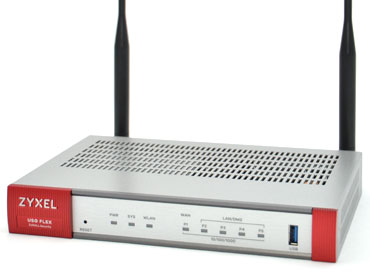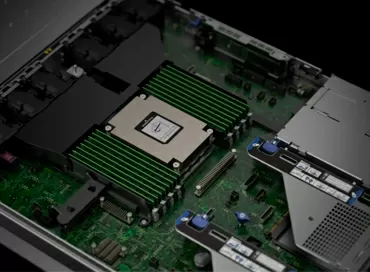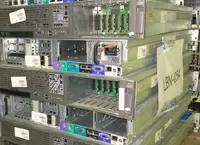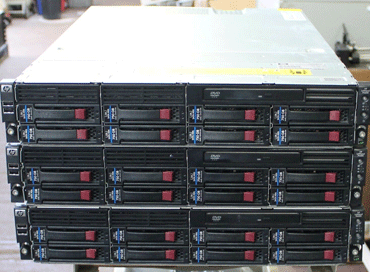Pros and cons of switching to 2.5-inch hard drives using the example of HP servers
More than a year ago, HP discontinued its SCSI servers and began manufacturing SAS and SATA 2.5 form factor servers & rdquo; and 3.5 ”. In this review, we will consider all the features of these drives and make a comparative analysis of various models. HP servers and storage systems currently use the following drives:
Table 1: 2.5 ”(SFF) Hard Drives

| Form Factor | Volume, Gb | Speed, rpm | Interface | Number of ports |
| 2,5 ” | 36 | 15000 | SAS 3Gbit/s | 1 |
| 2,5 ” | 36 | 15000 | SAS 3Gbit/s | 2 |
| 2,5 ” | 72 | 10000 | SAS 3Gbit/s | 1 |
| 2,5 ” | 72 | 10000 | SAS 3Gbit/s | 2 |
| 2,5 ” | 72 | 15000 | SAS 3Gbit/s | 1 |
| 2,5 ” | 72 | 15000 | SAS 3Gbit/s | 2 |
| 2,5 ” | 146 | 10000 | SAS 3Gbit/s | 1 |
| 2,5 ” | 146 | 10000 | SAS 3Gbit/s | 2 |
| 2,5 ” | 120 | 5400 | SATA 1,5Gbit/s | 1 |
Table 2: 3.5 ”(LFF) Hard Drives

| Form factor | Volume, Gb | Speed, rpm | Interface | < strong> Number of ports |
| 3,5 ” | 72 | 15000 | SAS 3Gbit/s | 1 |
| 3,5 ” | 72 | 15000 | SAS 3Gbit/s | 2 |
| 3,5 ” | 146 | 15000 | SAS 3Gbit/s | 1 |
| 3,5 ” | 146 | 15000 | SAS 3Gbit/s | 2 |
| 3,5 ” | 300 | 15000 | SAS 3Gbit/s | 1 |
| 3,5 ” | 300 | 15000 | SAS 3Gbit/s | 2 |
| 3,5 ” | 450 | 15000 | SAS 3Gbit/s | 2 |
| 3,5 ” | 750 | 7200 | SAS 3Gbit/s | 2 |
| 3,5 ” | 1000 | 7200 | SAS 3Gbit/s | 2 |
| 3,5 ” | 160 | 7200 | SATA 3Gbit/s | 1 |
| 3,5 ” | 250 | 7200 | SATA 3Gbit/s | 1 |
| 3,5 ” | 500 | 7200 | SATA 3Gbit/s | 1 |
| 3,5 ” | 750 | 7200 | SATA 3Gbit/s | 1 |
| 3,5 ” | 1000 | 7200 | SATA 3Gbit/s | 1 |
| 3,5 ” | 80 | 7200 | SATA 1,5Gbit/s | 1 |
| 3,5 ” | 160 | 7200 | SATA 1,5Gbit/s | 1 |
| 3,5 ” | 250 | 7200 | SATA 1,5Gbit/s | 1 |
| 3,5 ” | 500 | 7200 | SATA 1,5Gbit/s | 1 |
| 3,5 ” | 750 | 7200 | SATA 1,5Gbit/s | 1 |
Thus, there are the following specific differences in discs:
1. Form factor: 2.5 "or 3.5"
2. Interface speed: 3Gbit/sec or 1.5Gbit/sec
3. Number of ports in the disk controller: 1 or 2
Now let's take a closer look at these features.
Form Factor
Let's figure out which disks are most in demand at the moment, what is the price/volume/performance ratio.
2.5 "discs are usually called SFF (Small Form Factor), and 3.5" discs are called LFF (Large Form Factor).
So where are the disks in use at the moment:
LFF drives are used in servers: HP Proliant DL160G5, DL165G5, DL180G5, DL185G5, DL320G5p, DL320s, ML150G5, ML310G5, ML350G5, proliant dl380 g6, and in storage systems: HP StorageWorks 1200r, MSA 60 as well as MSA 2000, Storage Server.
SFF drives are used in all BL series servers, in all 3xx, 5xx, 7xx series servers, in HP StorageWorks 1200r, MSA 50, MSA 70 storage systems, as well as in the Storage Server line.
As we can see from the applicability list, SFF solutions are intended to be used in mid-range and high-end servers, as well as in compact storage systems, while LFF solutions are suitable for entry-level servers and storage systems where storage of large amounts of data is required. Installing LFF drives into entry-level servers is of course justified due to the low cost of the drive.
Cost of the most common SAS drives:
72Gb SAS SFF SP 15K drives are offered for $ 495, while 72Gb SAS LFF SP 15K drives are offered for $ 240. As we can see, disks with the same characteristics, but different in form factor, differ in cost significantly. I would like to emphasize that the maximum capacity at the moment for SFF is 146Gb, and for LFF disks 1Tb.
Let's compare the power consumption of the same drives:
| Name | Form Factor | Consumption in operation, W | Standby Consumption W |
| 72Gb 10K SCSI | 3.5 | 12.9 | 8.0 |
| 72Gb 10K SAS | 3.5 | 13.4 | 8.1 |
| 72Gb 10K SAS | 2.5 | 8.4 | 5.3 |
| 72Gb 15K SCSI | 3.5 | 13.2 | 8.2 |
| 72Gb 15K SAS | 3.5 | 13.7 | 8.6 |
| 72Gb 15K SAS | 2.5 | 9.5 | 6.6 |
The low power consumption of 2.5 ”drives is striking. In order to understand whether server users will benefit from energy savings, consider a typical file system:
1Tb file system using Raid 5:
-
8 * 146Gb 10K SAS SFF maximum power consumption of this system is 8 * 9W = 72W
-
4 * 300Gb 15K SAS LFF maximum power consumption of this system is 4 * 18.5W = 74W
-
15 * 72GB 15K SAS SFF maximum power consumption of this system 15 * 9.5W = 142.5W
Actually, there is no energy saving on SFF disks when building large raids, because this increases the number of disks. SFF drives are advantageous in terms of energy savings when used as system drives, when large volumes are not required, and 2-4 drives are required in a raid. In all other cases, a careful calculation of electricity is required, taking into account the reduction in disk power consumption during idle time. On average, an SFF drive with the same size and rotational speed as an LFF drive consumes 40% less power. From this it is easy to understand that if the number of disks in a raid doubles when moving from an LFF to an SFF form factor, then such a transition will increase the power consumption of the entire file system.
Interface speed
There are currently two widely used interfaces SAS and SATA. The SAS interface has a maximum bandwidth of 3Gb/s, while SATA controllers have only recently started supporting this capability. Previously, all HP servers had SATA controllers with 1.5Gb/s bandwidth, although drives have long been used SATA-II with 3Gb/s bandwidth. HP announced that by updating the controller BIOS, most controllers will be able to support 3Gb/s.
Number of disk controller ports
Many of you have already come across SP and DP. Now let's figure out what this means and why it is needed. SP is short for single port, DP is short for dual port. Why, and most importantly, where are DP-enabled disks used?
DP drives have 2 data ports and are more versatile than SP drives. DP is currently only available on the StorageWorks MSA 70 storage system if the HP StorageWorks Dual Domain I/O Module Option (AG779A) is installed and all disks in the DP storage system. In this case, it will be possible to use the Dual Domain technology, which will increase the performance of the data array up to 30%.
Conclusion:
On the whole, the usefulness of the transition to the new form factor is difficult to assess. Because this transition has a number of pros and cons. In conclusion, we list the main pros and cons of each factor:
Form Factor 2.5"
|
Pros |
Cons |
| The low weight of the disk allows you to significantly reduce the weight of large storage systems. | The high cost of disks, as well as the high cost of solutions that use these disks. |
| Low power consumption of small Raid arrays. | High power consumption of large Raid arrays, due to the small maximum capacity, you have to install a large number of disks. |
| Low maximum volume. For SAS 146Gb, for SATA 120GB. |
Form Factor 3.5";
|
Pros |
Cons |
| Large maximum capacity, up to 1TB SAS and SATA. | Large disk mass, the total mass of a large storage system will be large. |
| Low cost drives, as well as solutions in which these drives are used. | High power consumption of each individual drive. |
| Higher access times when comparing two similar 2.5 "and 3.5" drives. |
Sergey Panin, Enstor
09/16/2008













